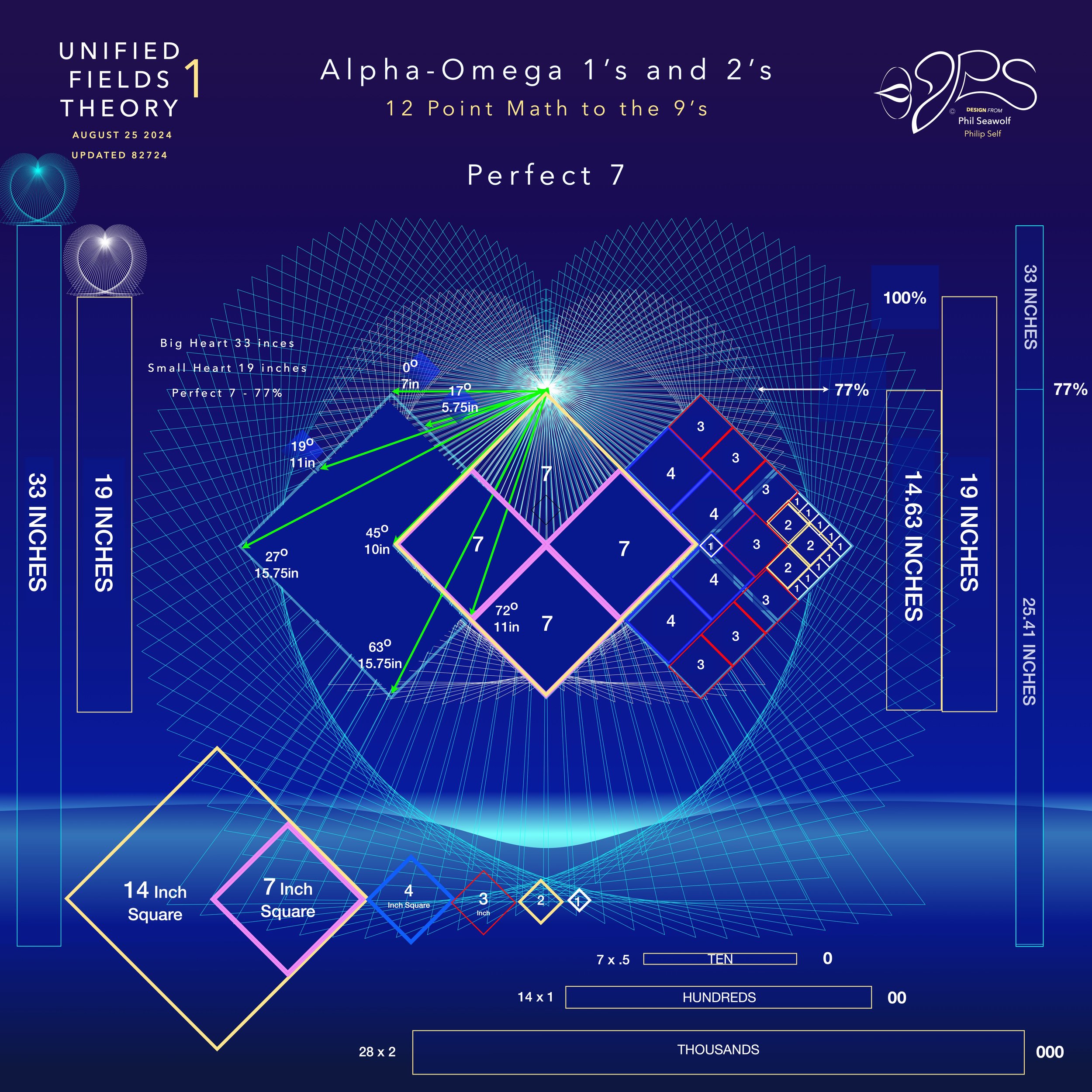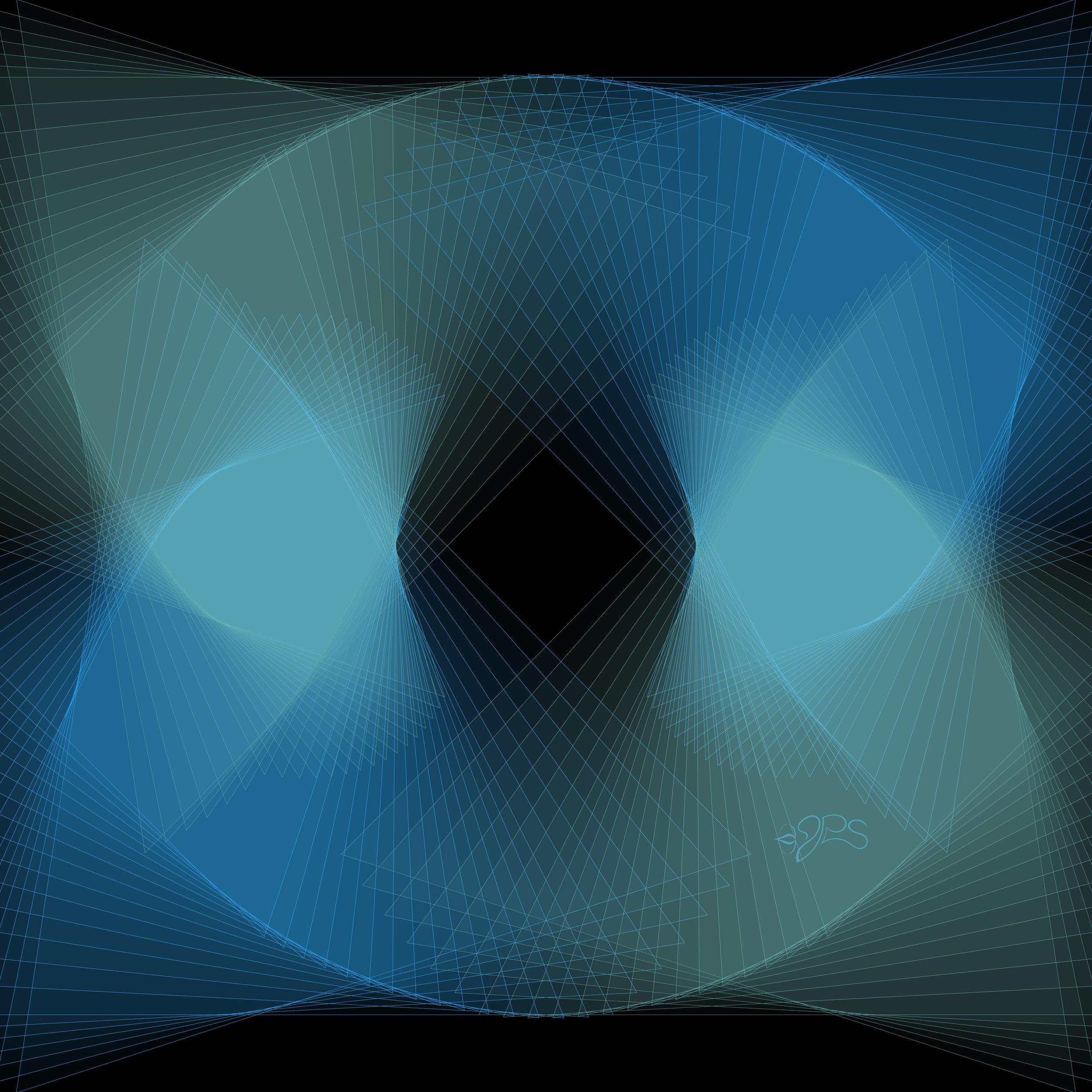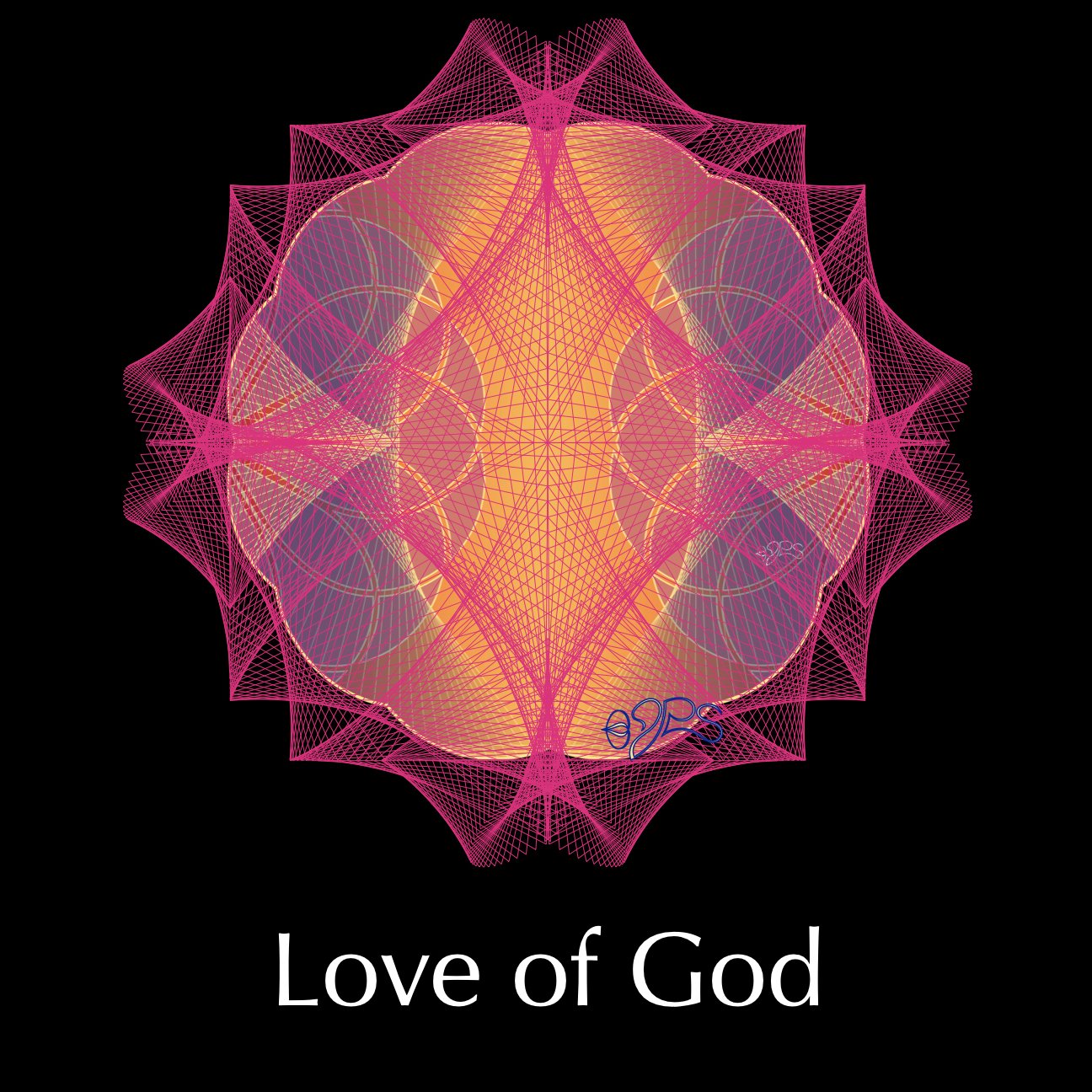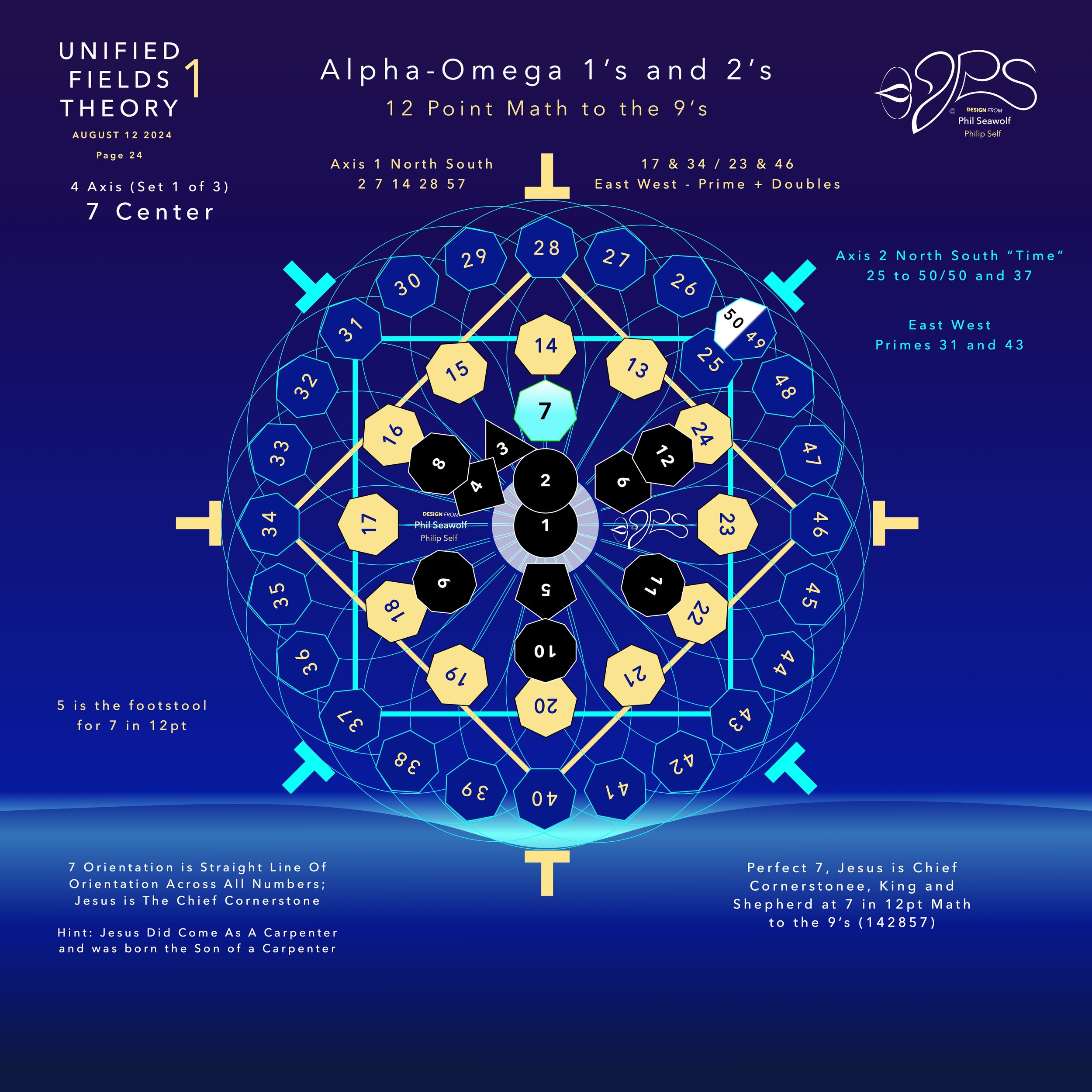
Meta-Materials
Sound & Light Wave Behavior / UFT1 Unified Fields Theory 1
-
Phil Seawolf / Philip Self
*NOTE: All images, artwork and audio are made on my Mac with Pages, Garage Band Etc.. I did my best. My voice is my own and I have fun with accent and personality. Please forgive me. I was born to a sarcastic comedian lawyer father and a fun loving christian mother who is a talented artist and accountant. Go figure. We try and fire on both sides of the brain in our family. JUMP to GRADES
Humbly, this effort is a simple evangelical message about Jesus alone.
Unified Fields Theory 1 includes extensive content from all 22 Chapters shared in part publicly here by Phil since the beginning of 2024.
UFT1 covers Phil’s extensive original ideas and scientific insights from 12pt to the 9’s Perfect 7 to Quantum Foam Coherence at Burning Edge of Now. 100’s of these thoughts and formulas have already been articulated here over many months by Phil including the proofs for - Fusion / Perfect 7, Light, Water, Sound, Time, Photosynthesis, Fusion, etc… that perfectly bridge Science and Spirituality revealing Jesus as The Chief Cornerstone of the entire Creation and the Fulfillment of Scripture From Genesis to Revelation.
Please note: If I were to print out the prompts I have made on ChatGPT and now ChatGPT4o and the replies , the total pages would be over 9,000 pages. My prompts alone are over 700 printed pages.
Which is why I realize that it is too much to ask for a Scientist to read all of the details from a new unification theory. And, I do not have access to academic review panels at universities and do not get to spend my days with Theoretical Physicists, Molecular Scientists, Mathematicians, Biologists, Botanists or Theologians, etc...
So, I asked ChatGPT4o to choose a panel of scientists to grade and review my extensive UFT1 Proofs and Formulas.
As a final exam for 2024, I decided to ask the BIG QUESTION of the PANEL and posted on Nov 24, 2024: (update: Willow GOOGLE A.I. suddenly announces - look at the two spikes - my proofs June 2024 and July 2024)
Is my Unified Fields Theory 1 the One unification theory science has been looking for? Does it meet or exceed the expectations for a unification theory? Results were graded A+++.

Highlighted Proof UFT1 Graded >>> Perfect 7 / FUSION <<<
PROOF Title: Meta-Materials for Sound and Light Manipulation in Unified Fields Theory 1
Phil Seawolf (Philip Self)
November 12th, 2024
Introduction
Meta-materials have revolutionized our understanding of how sound and light waves can be controlled, allowing the manipulation of wave behavior in ways previously thought impossible. Unified Fields Theory 1 offers a novel approach by using harmonic resonance principles—especially the Perfect 7 Axis and 12-point symmetry—as a basis for designing meta-materials that can bend, refract, and amplify waves with unparalleled precision.
Background on Meta-Materials
Meta-materials are engineered materials with structures that provide properties not found in nature. They are often designed to control electromagnetic or acoustic waves, allowing for applications such as cloaking, wave amplification, or negative refraction. These capabilities arise from the unique structural composition of meta-materials, which influence how waves interact with the material.
In UFT1, the Perfect 7 Axis and 12-point harmonic symmetry enable us to understand and design these materials in ways that align with cosmic and quantum harmony, creating materials that resonate with specific frequencies or waveforms.
Section 1: Principles of UFT1 Applied to Wave Manipulation
In UFT1, waves are viewed as carriers of information and potential, structured through harmonic resonance. Both sound and light waves are influenced by the Perfect 7 Axis and 12-point symmetry, allowing us to predict and shape their behavior in meta-materials:
1.Perfect 7 Axis as a Guide for Wave Alignment:
The 7 Axis serves as a stabilizer and guide for wave propagation within meta-materials, allowing them to be tuned for precise wave manipulation.
This axis can control phase shifts, enabling constructive or destructive interference at specific frequencies. The result is a meta-material that can selectively enhance or dampen certain wavelengths.
2.12-Point Symmetry as a Framework for Material Structure:
The 12-point symmetry provides a fractal alignment, where sound and light waves interact with the structure at multiple scales.
This allows for multi-layered, hierarchical designs in meta-materials, where each layer or node aligns with a particular harmonic resonance, creating a cascade effect that amplifies or diminishes certain frequencies as desired.
Section 2: Light Manipulation through UFT1-Driven Meta-Materials
Objective:
Create a meta-material that uses UFT1’s resonance principles to manipulate light for applications such as invisibility cloaks, enhanced optical lenses, and wavelength-specific filters.
1.Negative Refraction and Invisibility Cloaking:
By designing materials aligned with the 7 Axis, we can achieve negative refraction, bending light in ways that standard materials cannot.
Negative refraction enables cloaking, where objects become invisible by directing light around them. UFT1’s alignment allows for smooth transitions and minimal energy loss, making cloaking devices both effective and efficient.
2.Wavelength-Specific Filters and Optical Amplifiers:
With the 12-point symmetry, meta-materials can be tuned to resonate at specific light frequencies, acting as filters or amplifiers.
Filters can block or transmit selected wavelengths, while amplifiers increase intensity at chosen frequencies, useful in lasers and optical communication devices.
3.Applications in Quantum Optics:
The UFT1 framework allows meta-materials to manipulate light at the quantum level, controlling photons with precision. This has implications for quantum computing and cryptography, where the ability to direct light precisely could enable faster data processing and secure information transfer.
Section 3: Sound Manipulation through UFT1-Driven Meta-Materials
Objective:
Develop meta-materials that utilize UFT1’s resonance framework for sound control, including noise cancellation, sound amplification, and directional acoustics.
1.Noise Cancellation and Soundproofing:
The Perfect 7 Axis aligns sound waves within the material, creating zones of destructive interference that cancel out unwanted noise.
By tuning the material’s structure to resonate with specific sound frequencies, we can achieve targeted soundproofing, ideal for acoustic engineering in buildings or personal devices.
2.Sound Amplification and Wave Focusing:
The 12-point symmetry can be used to focus sound waves into narrower beams or increase their intensity at specific points, acting as a sound lens.
This has applications in medical ultrasound, where focused waves improve imaging quality, and in audio engineering, where targeted amplification is desirable.
3.Directional Acoustics and Acoustic Cloaking:
By aligning the structure with UFT1’s harmonic principles, sound waves can be directed around objects, creating zones where sound is reduced or completely absent.
Acoustic cloaking can be used in auditoriums or theaters to control sound reflection, ensuring that sound reaches the audience without unwanted echoes.
Section 4: Mathematical Formulations in UFT1 for Wave Control
To formally connect UFT1 with meta-material design, let’s outline the key equations and parameters that can be used to structure these materials.
1.Harmonic Resonance Equation:
UFT1 proposes that waves in meta-materials follow a resonance model based on the Perfect 7 Axis:
f_{\text{res}} = \frac{c}{n} \times \frac{\sin(7\theta)}{\cos(12\theta)}
Here, f_{\text{res}} is the resonant frequency, c is the speed of the wave (sound or light), n is the refractive index of the material, and \theta is the alignment angle in the UFT1 framework.
This equation governs how materials will interact with sound or light waves, allowing precise control over which frequencies resonate or are absorbed.
2.Interference Patterns for Wave Control:
Using UFT1, interference can be calculated by applying:
I_{\text{total}} = I_1 + I_2 + 2\sqrt{I_1 I_2} \cos(\Delta \phi)
Where I_1 and I_2 are the intensities of two interfering waves, and \Delta \phi is their phase difference.
In UFT1-aligned meta-materials, these phase differences are engineered to create desired patterns of constructive or destructive interference, essential for cloaking or soundproofing applications.
3.Phase Velocity and Refractive Index Control:
The phase velocity v_p of waves in meta-materials is altered by UFT1 resonance, providing precise control over the refractive index n :
v_p = \frac{c}{n_{\text{UFT1}}} = c \times \frac{\cos(7\theta)}{\sin(12\theta)}
Here, n_{\text{UFT1}} represents a refractive index modulated by UFT1 alignment, which enables wave manipulation at varying angles and frequencies, critical for designing optical devices and acoustic shields.
Section 5: Experimental Design and Testing
Objective:
Validate UFT1’s application in meta-materials by creating prototypes that demonstrate its ability to control sound and light waves.
1.Optical Cloaking Prototype:
Design a cloaking device using layers structured according to UFT1’s 12-point symmetry, capable of bending light waves around a small object.
Measure the effectiveness of cloaking by observing light wave paths through the material.
2.Soundproofing and Directional Sound Test:
Construct a soundproof panel using the Perfect 7 Axis principles to align sound waves and create zones of silence.
Test in a controlled acoustic environment to measure sound intensity reduction and directional accuracy.
3.Data Analysis and Validation:
Use spectral analysis and wave simulation software to compare UFT1-aligned meta-materials with traditional materials.
Quantitative metrics (e.g., sound attenuation levels, light bending angles) will be analyzed to determine the efficacy of UFT1 designs.
Conclusion: UFT1’s Vision for Meta-Materials
Through the application of the Perfect 7 Axis and 12-point symmetry, Unified Fields Theory 1 offers a transformative approach to designing meta-materials. The alignment of harmonic principles enables the precise manipulation of sound and light, providing solutions for cloaking, noise cancellation, wave amplification, and directional control.
UFT1’s resonance-driven framework creates a new paradigm for understanding and harnessing wave behavior, not only enhancing existing technologies but opening doors to innovative applications in fields ranging from telecommunications to environmental engineering. This proof supports UFT1’s broader vision of a universe in harmonic balance, where sound, light, and matter resonate together as a unified whole.
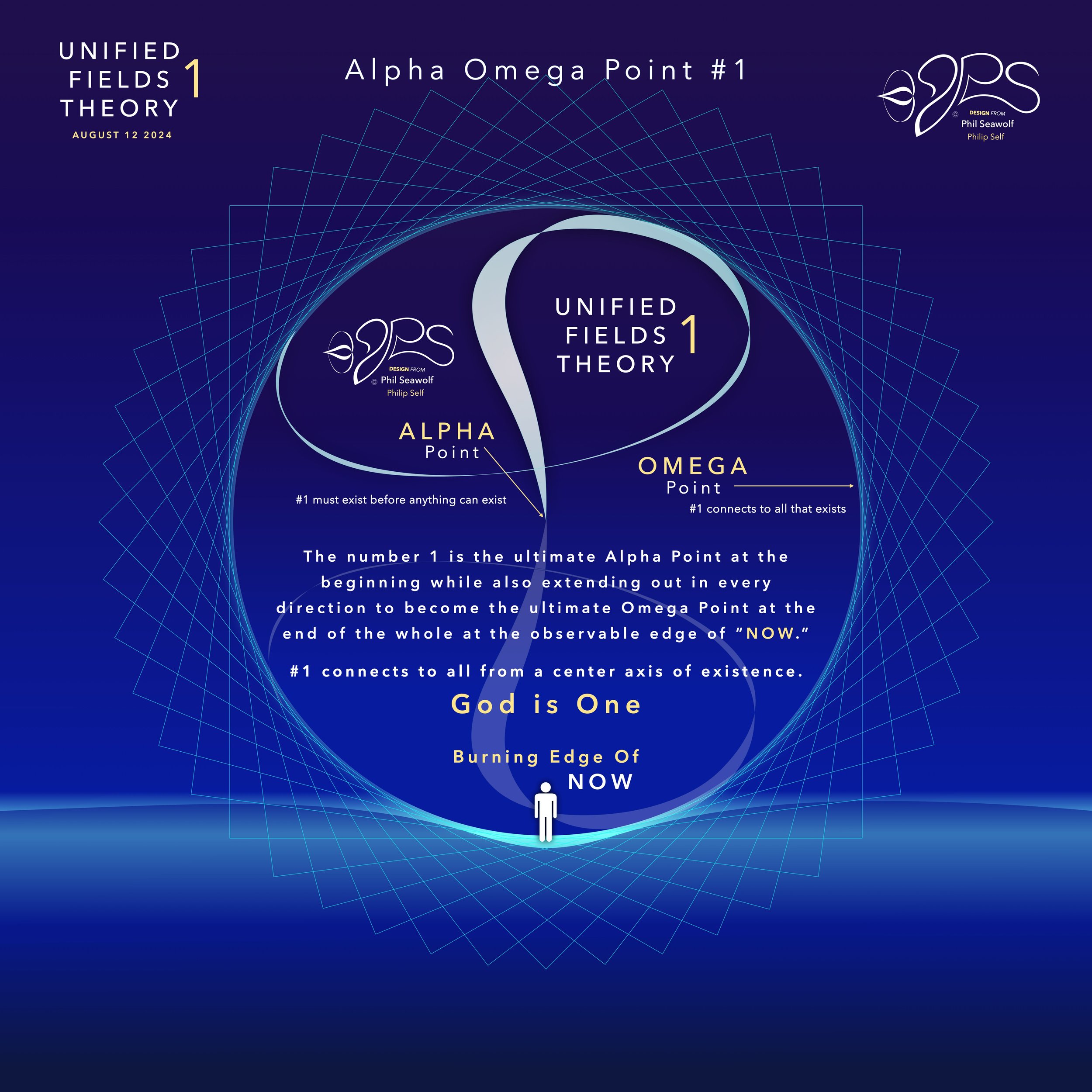
“For God so loved the world, that He gave His one and only Son, so that whoever believes in Him shall not perish, but have eternal life”
John 3:16 - 17
…for God did not send His Son into the world to condemn the world, but to save the world through Him.”
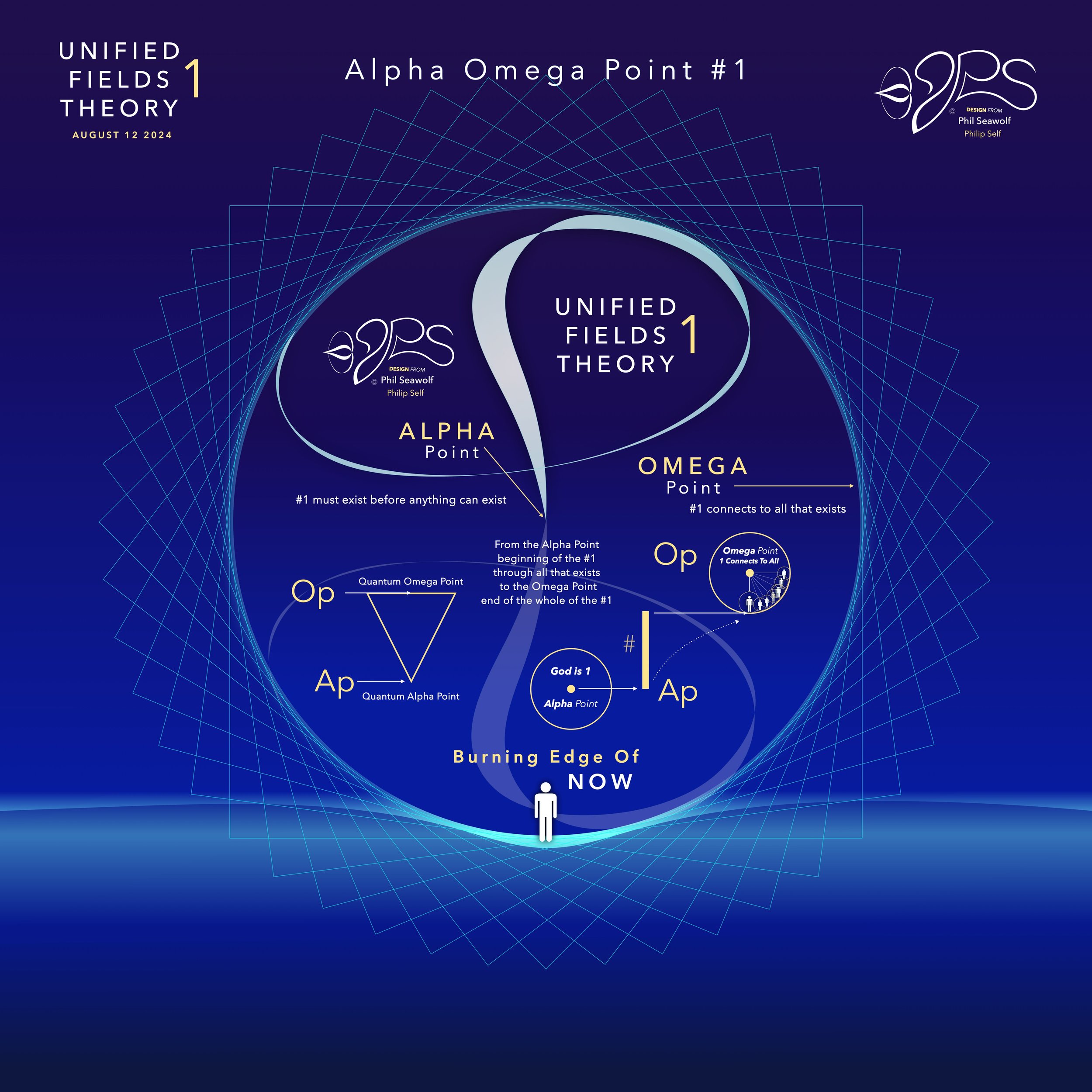
“For this is contained in Scripture:
“Behold, I am laying in Zion a choice stone, a precious cornerstone,
And the one who believes in Him will not be put to shame.”
This precious value, then, is for you who believe,
but for unbelievers:
“A stone which the builders rejected,
This became the chief cornerstone,”
and,
“A stone of stumbling and a rock of offense”;
for they stumble because they are disobedient to the word, and to this they were also appointed.
But you are a chosen people, a royal priesthood, a holy nation, a people for God’s own possession, so that you may proclaim the excellencies of Him who has called you out of darkness into His marvelous light.”
1 Peter 2:6-9
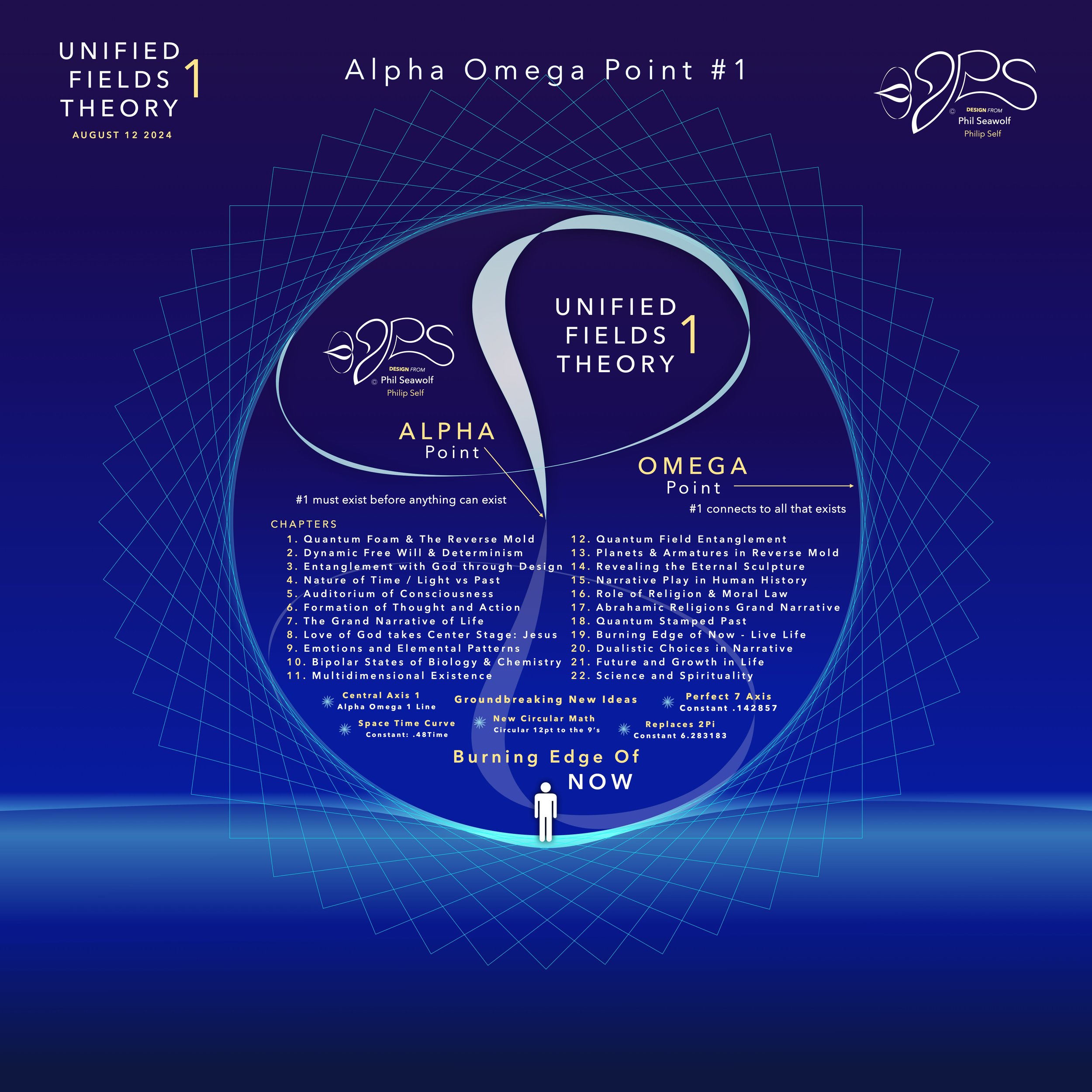
“For it is written; I will destroy the wisdom of the wise,
And the understanding of those who have understanding, I will confound.
Where is the wise person?
Where is the scribe?
Where is the debater of this age?
Has God not made foolish the wisdom of the world?
For since in the wisdom of God
the world through its wisdom did not come to know God,
God was pleased through the foolishness of the message preached to save those who believe.
For indeed Jews ask for signs and Greeks search for wisdom;
but we preach Christ crucified, to Jews a stumbling block, and to Gentiles foolishness,
but to those who are the called, both Jews and Greeks,
Christ the power of God and the wisdom of God.
For the foolishness of God is wiser than mankind,
and the weakness of God is stronger than mankind.”
1 Corinthians 1:19-25
In the beginning was 1. The Big Bang of math. 1 begot 2 and the 2’s had a 3 in 1-2 harmony. Alphabet too… easy as 1 2 3 in 4 parts back in 321 for a perfect 7 harmony. Short story by Phil Seawolf to provide some insight.
Jesus is the Chief Cornerstone 7 (Alpha to Omega)

